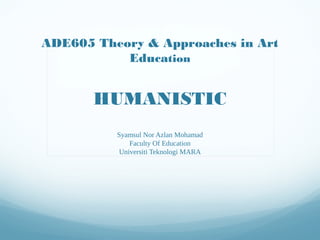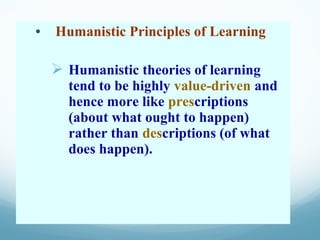The document discusses humanistic theories of art education proposed by Abraham Maslow and Carl Rogers. Maslow believed that individuals have hierarchical needs that must be met, from basic physiological needs to self-actualization. Rogers agreed and added that for growth to occur, one needs an environment providing genuineness, acceptance, and empathy. Both theorists saw focusing on the self and fulfilling potential as central to humanistic education.




























